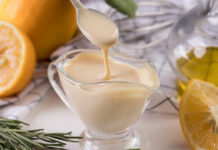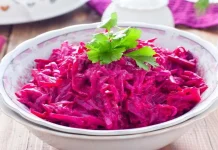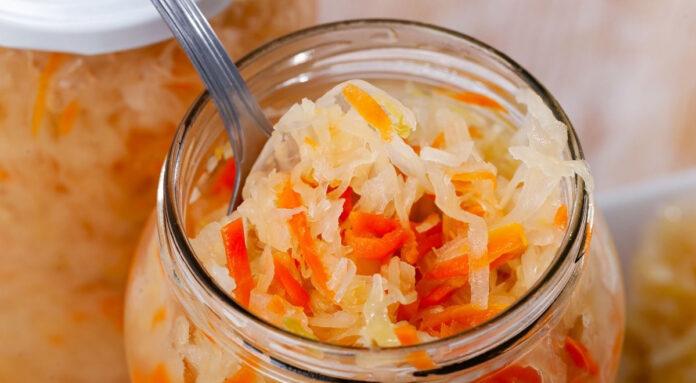Sauerkraut is a popular salad.
Made from fermented cabbage and a few simple ingredients, it’s a delicious and nutritious addition to any meal. In this post, we’ll delve into the history of sauerkraut, explore its many health benefits, and share an easy recipe for making your own at home.
It’s low in calories and high in fiber, making it an excellent food for weight loss and digestion. It’s also rich in vitamins C and K, as well as iron and other essential minerals. The fermentation process used to make sauerkraut produces beneficial probiotics that can improve gut health and boost the immune system.
With its numerous health benefits and easy preparation, there’s no reason not to give sauerkraut a try!
You can also check out our other Salad recipes.

Sauerkraut
Ingredients
- 5 lbs. cabbage
- 1 pc carrot
- 2 tbsp salt
Instructions
- Wash the cabbage heads and remove the outer leaves if necessary. Shred using a grater or cut into thin strips using a regular kitchen knife.
- Spread the shredded cabbage on a table surface, add 1 grated carrot and salt at a rate of 2 tablespoons (without a hill) per 3-quart jar of cabbage.
- Mix everything with your hands, but do not squeeze – this is important if you like crispy sauerkraut.
- Tightly pack the mixture into the jar up to the brim.
- Leave to ferment in a warm place. In a day or two, the cabbage will release juice, so it is worth putting a deep bowl or plate under the jar. Do not be afraid if at this stage you feel an unpleasant aroma in the room. It will disappear eventually. In three days, the sauerkraut will be ready.
Notes
- Sauerkraut can be stored in the refrigerator for several months.
- Once the fermentation process is complete and the sauerkraut has reached the desired level of tanginess, transfer it to a clean jar with a tight-fitting lid and store it in the refrigerator.
- Make sure to keep the sauerkraut submerged in its brine to prevent spoilage.
- You can also freeze sauerkraut for longer storage, but this may affect its texture and flavor


























